| S.No. |
Name of the temple |
Location |
Photo |
Presiding deity |
Notes/Beliefs |
Azhwars |
|
|
| 1 |
Srirangam |
Srirangam, Trichy district
Tamil Nadu
10°51′45″N 78°41′23″E / 10.8625°N 78.689722°E / 10.8625; 78.689722 |
|
Ranganayagi
Ranganathar |
Srirangam temple is often listed as the largest functioning Hindu temple in the world, the still larger Angkor Wat being the largest existing temple. The temple occupies an area of 156 acres (631,000 m²) with a perimeter of 4,116m (10,710 feet) making it the largest temple in India and one of the largest religious complexes in the world.[8][9] The annual 21 day festival conducted during the Tamil month of Margazhi (December–January) attracts 1 million visitors.[10] |
Periyalvar
Aandaal
Kulasekara Alvar
Thirumalisai Alvar
Thondaradippodi Alvar
Thiruppaan Alvar
Thirumangai Alvar
Poigai Alvar
Bhoothathalvar
Peyalvar
Nammalvar |
| 2 |
Sri Azhagiya Manavala Perumal Temple |
Uraiyur, Trichy district
Tamil Nadu
10°49′N 78°40′E / 10.82°N 78.67°E / 10.82; 78.67 |
|
Kamalavalli Vasalakshmi
Azhagiya Manavala Perumal |
The temple locally called Nachiyar Koil and is one of the few Divyadesams where the goddess has prominence over Vishnu.[11][12]The temple is believed to be the birthplace of Thiruppaan Alvar, one of the twelve Azhwar saints belonging to the 6th-8th centuries. In Srirangam, the yearly birth festival of Tirupannazhwar is celebrated wit Viswaroopa darshan of Ranganatha at the sanctum on the occasion of his birthday. The festive idol of Tiupannazhwar is taken from the temple to Srirangam.[13] |
Kulasekara Alvar - 11
Thirumangai Alvar - 13 |
| 3 |
Uthamar Kovil |
Bhikshandar Kovil, Trichy district
Tamil Nadu
10°29′N 78°49′E / 10.49°N 78.81°E / 10.49; 78.81 |
|
Poornaavalli
Purushothama Perumal |
The temple is only a few of the temples that are dedicated to the Hindu god Trimurti (trinity) namely Vishnu, Shiva and Brahma. As per Hindu legend, the temple is believed to have been constructed by Janakar, the king of Janakapuri and the father of Sita from the epic Ramayana. Thirumangai Azhwar is believed to have resided in the temple to build the surrounding walls of the Srirangam Ranganathaswamy temple.[14] |
Thirumangai Alvar - 10 |
| 4 |
Pundarikakshan Perumal Temple |
Thiruvellarai, Trichy district
Tamil Nadu
10°58′N 78°40′E / 10.96°N 78.67°E / 10.96; 78.67 |
|
Rakthapankajavalli
Pundarikaksha Perumal |
Pundarikakshan Perumal temple is believed to have been built by the Pallava king Dantivarman (796–847 AD).[15][16]A swastika-shaped temple tank built during 800 AD is present in the south-western corner of the street around the temple. It has four stepped gateways, each having 51 steps. The tank is believed to have been built by Kamban Araiyan during the reign of Dantivarman. In modern times, it is maintained by the Department of Archaeology of the Government of Tamil Nadu. The temple complex covers an area of 2.62 ha (6.5 acres), while the tank covers an area of 0.1256 ha (0.310 acres).[17][18]The chariot festival is unique in the state as a community feast is offered by several individuals and committees, a custom many centuries old.[19][20] |
Thirumangai Alvar - 10
Periazhwar - 10 |
| 5 |
Vadivazhagiya Nambi Perumal Temple |
Anbil, Trichy district
Tamil Nadu
10°52′04″N 78°52′56″E / 10.867735°N 78.882171°E / 10.867735; 78.882171 |
|
Soundaryavalli
Sundaramoorthaye Poornaya Perumal |
King Sundara Chola who ruled the area was a devotee of the temple and during each of his innumerable victories in wars, he showered a lot of wealth on this temple. His prime minister Anirudha Brahmarayar is believed to be from Anbil, the village where the temple is located. The copper plates having the records from the Chola period from Anbil indicate generous contribution from the Medieval Cholas indicate various gifts to the temple.[21][22] |
Thirumazhisai Azhwar - 2 |
| 6 |
Appakkudathaan Perumal Temple |
Koviladi, Trichy district
Tamil Nadu
10°50′22″N 78°53′21″E / 10.839307°N 78.889073°E / 10.839307; 78.889073 |
|
Indravalli
Appala Ranganatha Perumal |
The temple has inscriptions from the 18th year of the reign of Aditya Chola.[23][24] The temple is one of the five Pancharanga Kshetrams, a group of five Hindu temples on the banks of the Kaveri River dedicated to Ranganatha, a form of Vishnu.[25][26] |
Periyalvar- 33
Thirumangai Azhwar
Thirumalisai Alvar
Nammazhwar |
| 7 |
Hara Saabha Vimocchana Perumal Temple |
Kandiyur, Thanjavur district
Tamil Nadu
10°51′37″N 79°06′32″E / 10.860255°N 79.108891°E / 10.860255; 79.108891 |
|
Indravalli
Appala Ranganatha Perumal |
Since Vishnu relieved (vimochana) the sin (saabha) of Shiva (also called Hara), the temple is called Hara Saabha Vimochana Temple.[27] |
Thirumangai Azhwar -10 |
| 8 |
Thirukoodalur |
Aduthurai
, Thanjavur district,
Tamil Nadu
10°55′31″N 79°12′13″E / 10.925152°N 79.203532°E / 10.925152; 79.203532 |
|
Padmasani
Jagathrakshaga Perumal |
Kaveri wanted to cleanse herself and approached Hindu god Brahma. She is believed to have worshipped Vishnu at this place and got relieved. A parrot which was devoted to Vishnu was shot down in the nearby forest. Vishnu rescued the parrot and appeased him of him previous birth. Thus it is believed that Vishnu descends here for all forms of life. Vishnu is also believed to have appeared for sage Nandaka.[28] |
Thirumazhisai Aazhwar - 1 |
| 9 |
Thirukavithalam |
Kapisthalam
, Thanjavur district,
Tamil Nadu
10°56′49″N 79°15′23″E / 10.946890°N 79.256512°E / 10.946890; 79.256512 |
|
Ramamanivalli
Gajendravaradha Perumal |
Gajendra Varadha is believed to have appeared to Gajendra the elephant also called Indrajumnan, the crocodile called Koohoo, Sage Parasara and Sri Anjaneya.[29] |
Thirumazhisai Aazhwar - 1 |
| 10 |
Thiruppullamboothangudi |
Pullabhoothangudi
, Thanjavur district,
Tamil Nadu
10°58′18″N 79°18′12″E / 10.971596°N 79.303415°E / 10.971596; 79.303415 |
|
Hemabja
Thrudathanvee Ramabadhra Perumal |
|
|
| 11 |
Thiruaadhanur |
Adanur,
Thanjavur district,
Tamil Nadu
10°58′35″N 79°18′48″E / 10.976470°N 79.313454°E / 10.976470; 79.313454 |
|
Ranganayagi
Varshakalathinayaka Perumal |
|
|
| 12 |
Thirukudanthai |
Kumbakonam, Thanjavur district,
Tamil Nadu
10°57′35″N 79°22′30″E / 10.959649°N 79.374999°E / 10.959649; 79.374999 |
|
Komalavalli
Aparyapthamrutha Perumal |
|
|
| 13 |
Thiruvinnagar |
Tirunageswaram, Thanjavur district,
Tamil Nadu
10°57′42″N 79°25′55″E / 10.961570°N 79.432080°E / 10.961570; 79.432080 |
|
Boodevi
Lavanavarjitha Srinivasa Perumal |
|
|
| 14 |
Thirunaraiyur |
Nachiyar Kovil, Thiruvarur district,
Tamil Nadu
10°54′57″N 79°26′44″E / 10.915844°N 79.445554°E / 10.915844; 79.445554 |
|
Vanjulavalli
Srinivasa Perumal |
|
|
| 15 |
Thirucherai |
Tirucherai, Thiruvarur district,
Tamil Nadu
10°52′45″N 79°27′16″E / 10.879135°N 79.454402°E / 10.879135; 79.454402 |
|
Saranayagi
Saranatha Perumal |
|
|
| 16 |
Thirunandhipura Vinnagaram |
Nathan Kovil,
Thiruvarur district,
Tamil Nadu
10°55′19″N 79°22′20″E / 10.922075°N 79.372192°E / 10.922075; 79.372192 |
|
Shenbagavalli
Jagannatha Perumal |
|
|
| 17 |
Thiruvelliyangudi |
Thiruvelliyangudi,
Nagapattinam district,
Tamil Nadu
11°03′24″N 79°26′35″E / 11.056687°N 79.443095°E / 11.056687; 79.443095 |
|
Maragadhavalli
Srungarasundara Danushbani Ramaya Perumal |
|
|
| 18 |
Thirukannamangai |
Thirukannamangai,
Nagapattinam district,
Tamil Nadu
10°47′58″N 79°35′12″E / 10.799552°N 79.586645°E / 10.799552; 79.586645 |
|
Abishegavalli
Bhaktavatsala Perumal |
|
|
| 19 |
Thirukannapuram |
Tirukannapuram,
Nagapattinam district,
Tamil Nadu
10°52′07″N 79°42′15″E / 10.868499°N 79.704266°E / 10.868499; 79.704266 |
|
Kannapura
Sowriraja Perumal |
|
|
| 20 |
Thirukannangudi |
Tirukannankudi,
Nagapattinam district,
Tamil Nadu
10°45′26″N 79°45′48″E / 10.757222°N 79.763290°E / 10.757222; 79.763290 |
|
Loganayagi
Lokanatha Perumal |
|
|
| 21 |
Thirunagai |
Nagapattinam,
Nagapattinam district,
Tamil Nadu
10°45′35″N 79°50′37″E / 10.759830°N 79.843706°E / 10.759830; 79.843706 |
|
Soundaryavalli
Soundararaja Perumal |
|
|
| 22 |
Thiruthanjai Mamanikoil |
Thanjavur,
Thanjavur district,
Tamil Nadu
10°48′56″N 79°08′19″E / 10.815669°N 79.138677°E / 10.815669; 79.138677 |
|
Rakthapankajavalli
Neelamega Perumal |
|
|
|
Manikundram |
Thanjavur,
Thanjavur district,
Tamil Nadu
10°49′01″N 79°08′14″E / 10.816923°N 79.137229°E / 10.816923; 79.137229 |
|
Ambujavalli
Maniparvatha Perumal |
|
|
|
Thanjaiyali Nagar |
Thanjavur,
Thanjavur district,
Tamil Nadu
10°48′58″N 79°08′21″E / 10.816022°N 79.139155°E / 10.816022; 79.139155 |
|
Thanjanayagi
Narasimha Perumal |
|
|
| 23 |
Thiruvazhundur |
Theranzhdur,
Nagapattinam district,
Tamil Nadu
11°02′48″N 79°34′46″E / 11.046532°N 79.579468°E / 11.046532; 79.579468 |
|
Rakthapankajavalli
Devadhiraja Perumal |
|
|
| 24 |
Thiruchirupuliyur |
Thirusirupuliyur,
Nagapattinam district,
Tamil Nadu
10°59′28″N 79°40′10″E / 10.991202°N 79.669440°E / 10.991202; 79.669440 |
|
Dhayanayagi
Krupasamudra Perumal |
|
|
| 25 |
Thiruthalaichanga Nanmadiyam |
Thalachangadu,
Nagapattinam district,
Tamil Nadu
11°07′47″N 79°47′07″E / 11.129789°N 79.785252°E / 11.129789; 79.785252 |
|
Siras sanga
Chandrasabahara Perumal |
|
|
| 26 |
Thiruindalur |
Indalur,
Nagapattinam district,
Tamil Nadu
11°06′35″N 79°38′46″E / 11.109733°N 79.646232°E / 11.109733; 79.646232 |
|
Pundareegavalli
Parimalaranganatha Perumal |
|
|
| 27 |
Thirukazhicheerama Vinnagaram |
Sirkazhi,
Nagapattinam district,
Tamil Nadu
11°04′29″N 79°43′54″E / 11.07479°N 79.731704°E / 11.07479; 79.731704 |
|
Loganayagi
Lokanatha Thrivikrama Perumal |
|
|
| 28 |
Thirukkavalambadi |
Thirunangur,
Nagapattinam district,
Tamil Nadu
11°10′37″N 79°46′57″E / 11.1769°N 79.7824°E / 11.1769; 79.7824 |
|
Pankajavalli
Gopala Krishna Perumal |
|
|
| 29 |
Thiruarimeya Vinnagaram |
Thirunangur,
Nagapattinam district,
Tamil Nadu
11°10′40″N 79°46′53″E / 11.17768°N 79.78152°E / 11.17768; 79.78152 |
|
Amrudhagadavalli
Gadakeli Narthanaya Perumal |
|
|
| 30 |
Thiruvanpurushothamam |
Thirunangur,
Nagapattinam district,
Tamil Nadu
11°10′44″N 79°46′36″E / 11.178783°N 79.776690°E / 11.178783; 79.776690 |
|
Purushothama
Purushothama Perumal |
|
|
| 31 |
Thirusemponsaikoil |
Thirunangur,
Nagapattinam district,
Tamil Nadu
11°10′42″N 79°46′47″E / 11.178446°N 79.779651°E / 11.178446; 79.779651 |
|
Sweda Pushpavalli
Hemaranganatha Perumal |
|
|
| 32 |
Thirumanimadakoil |
Thirunangur,
Nagapattinam district,
Tamil Nadu
11°10′26″N 79°46′37″E / 11.173971°N 79.776872°E / 11.173971; 79.776872 |
|
Pundareegavalli
Sashvatha Deepaya Narayana Perumal |
|
|
| 33 |
Thiruvaigunda Vinnagaram |
Thirunangur,
Nagapattinam district,
Tamil Nadu
11°10′47″N 79°46′42″E / 11.179804°N 79.778267°E / 11.179804; 79.778267 |
|
Vaigundavalli
Vaikuntanatha Perumal |
|
|
| 34 |
Thiruthetriambalam |
Thirunangur,
Nagapattinam district,
Tamil Nadu
11°10′23″N 79°47′42″E / 11.17302°N 79.7951°E / 11.17302; 79.7951 |
|
Rakthapankajavalli
Lakshmiranga Perumal |
|
|
| 35 |
Thirumanikoodam |
Thirunangur,
Nagapattinam district,
Tamil Nadu
11°10′39″N 79°46′40″E / 11.177415°N 79.777838°E / 11.177415; 79.777838 |
|
Boonayagi
Varadharaja Perumal |
|
|
| 36 |
Thiruparthanpalli |
Parthanpalli,
Nagapattinam district,
Tamil Nadu
11°10′12″N 79°47′51″E / 11.169952°N 79.797515°E / 11.169952; 79.797515 |
|
Kamala
Parthasarathy roopa, Kamalapathaye Perumal |
|
|
| 37 |
Thiruvali |
Thiruvali,
Nagapattinam district,
Tamil Nadu
11°12′11″N 79°46′28″E / 11.202979°N 79.774538°E / 11.202979; 79.774538 |
|
Amrudhagadavalli
Kedarapathivaraya Perumal |
|
|
|
Thirunagari |
Thirunagari,
Nagapattinam district,
Tamil Nadu
11°13′35″N 79°48′01″E / 11.226354°N 79.800335°E / 11.226354; 79.800335 |
|
|
|
|
| 38 |
Thiruthevanarthogai |
Thirunangur,
Nagapattinam district,
Tamil Nadu
11°11′49″N 79°46′32″E / 11.196842°N 79.775504°E / 11.196842; 79.775504 |
|
Samudradanaya
Devanayaka Perumal |
|
|
| 39 |
Thiruvellakulam |
Thirunangur,
Nagapattinam district,
Tamil Nadu
11°11′24″N 79°45′54″E / 11.190106°N 79.764929°E / 11.190106; 79.764929 |
|
Padmavathi
Srinivasa Perumal |
|
|
| 40 |
Thiruchitrakoodam |
Chidambaram,
Cuddalore district,
Tamil Nadu11°23′57″N 79°41′36″E / 11.399207°N 79.693364°E / 11.399207; 79.693364 |
|
Pundareegavalli
Govindaraja Perumal |
|
|
| 41 |
Thiruvaheendrapuram |
Thiruvanthipuram,
Cuddalore district,
Tamil Nadu11°44′42″N 79°42′34″E / 11.745099°N 79.709351°E / 11.745099; 79.709351 |
|
Hemabujavalli
Devanatha Perumal |
|
|
| 42 |
Thirukkovalur |
Thirukoyilur,
Tiruvannamalai district,
Tamil Nadu11°58′01″N 79°12′09″E / 11.967006°N 79.202479°E / 11.967006; 79.202479 |
|
Pushpavalli
Thrivikrama Perumal |
Vamana, a dwarf and an avatar of Vishnu, appeared here to quell the pride of Asura king Bali. The temple is believed to be the place where the first three Azhwars, the Vaishnava saints, namely, Poigai Alvar, Bhoothathalvar and Peyalvar attained salvation. The temple is one of the Panchakanna (Krishnaranya) Kshetrams, the five holy temples associated with Krishna, an avatar of Vishnu.[30][31] |
|
| 43 |
Thirukkachi - Atthigiri |
Kanchipuram,
Kanchipuram district,
Tamil Nadu12°49′09″N 79°43′29″E / 12.819137°N 79.724646°E / 12.819137; 79.724646 |
|
Perundevi
Devathiraja Perumal |
One of the greatest Hindu scholars of Vaishnava VisishtAdvaita philosophy, Ramanuja is believed to have resided in this temple.[32] The temple along with Ekambareswarar Temple and Kamakshi Amman Temple in Kanchipuram is popularly known as Mumurtivasam (abode of trio),[33] while Srirangam is referred to as ‘ The Koil’ (meaning: "temple") and Tirupati as the ‘Malai’ (Meaning: "hill"). |
|
| 44 |
Ashtabuyagaram |
Kanchipuram,
Kanchipuram district,
Tamil Nadu12°49′22″N 79°42′39″E / 12.822736°N 79.710806°E / 12.822736; 79.710806 |
|
Padmasani
Gajendravarada Perumal |
|
|
| 45 |
Thiruthanka |
Kanchipuram,
Kanchipuram district,
Tamil Nadu12°49′28″N 79°42′20″E / 12.824382°N 79.705543°E / 12.824382; 79.705543 |
|
Maragadhavalli
Deepaprakasa Perumal |
|
|
| 46 |
Thiruvelukkai |
Kanchipuram,
Kanchipuram district,
Tamil Nadu12°49′20″N 79°42′23″E / 12.822197°N 79.706450°E / 12.822197; 79.706450 |
|
Amruthavalli
Sundharayoghanarasimha Perumal |
|
|
| 47 |
Thiruneeragam |
Kanchipuram,
Kanchipuram district,
Tamil Nadu12°50′21″N 79°42′19″E / 12.839122°N 79.705185°E / 12.839122; 79.705185 |
|
Boovalli
Jagadeeswara Perumal |
|
|
| 48 |
Thiruppadagam |
Kanchipuram,
Kanchipuram district,
Tamil Nadu12°50′34″N 79°41′49″E / 12.842726°N 79.696941°E / 12.842726; 79.696941 |
|
Rukmani Sathyabama
Pandavadootha Perumal |
|
|
| 49 |
Nilathingal Thundam |
Kanchipuram,
Kanchipuram district,
Tamil Nadu12°50′51″N 79°41′58″E / 12.847463°N 79.699313°E / 12.847463; 79.699313 |
|
Chandrasoodavalli
Chandrasooda Perumal |
|
|
| 50 |
Thiruooragam |
Kanchipuram,
Kanchipuram district,
Tamil Nadu12°50′21″N 79°42′19″E / 12.839122°N 79.705185°E / 12.839122; 79.705185 |
|
Amudavalli
Thrivikrama Perumal |
|
|
| 51 |
Thiruvehka |
Kanchipuram,
Kanchipuram district,
Tamil Nadu12°49′27″N 79°42′45″E / 12.824070°N 79.712462°E / 12.824070; 79.712462 |
|
Komalavalli
Yathokthakari Perumal |
|
|
| 52 |
Thirukkaragam |
Kanchipuram,
Kanchipuram district,
Tamil Nadu12°50′21″N 79°42′19″E / 12.839122°N 79.705185°E / 12.839122; 79.705185 |
|
Padmamani
Karunagara Perumal |
|
|
| 53 |
Thirukkarvaanam |
Kanchipuram,
Kanchipuram district,
Tamil Nadu12°50′21″N 79°42′19″E / 12.839122°N 79.705185°E / 12.839122; 79.705185 |
|
Kamalavalli
Neelamega Perumal |
|
|
| 54 |
Thirukkalvanur |
Kanchipuram,
Kanchipuram district,
Tamil Nadu12°50′26″N 79°42′12″E / 12.840653°N 79.703250°E / 12.840653; 79.703250 |
|
Sundarabimbavalli
Choranatha Perumal |
|
|
| 55 |
Thiruppavalavannam |
Kanchipuram,
Kanchipuram district,
Tamil Nadu12°50′37″N 79°42′27″E / 12.843658°N 79.707604°E / 12.843658; 79.707604 |
|
Pravalavalli
Pravalavarna Perumal |
|
|
| 56 |
Thiru Parameswara Vinnagaram |
Kanchipuram,
Kanchipuram district,
Tamil Nadu12°50′14″N 79°42′34″E / 12.837151°N 79.709482°E / 12.837151; 79.709482 |
|
Vaigundavalli
Vaikundanatha Perumal |
|
|
| 57 |
Vijayaraghava Perumal Temple |
Thiruputkuzhi,
Kanchipuram district,
Tamil Nadu12°52′22″N 79°37′07″E / 12.872642°N 79.618683°E / 12.872642; 79.618683 |
|
Maragadavalli
Vijayaraghava Perumal |
|
|
| 58 |
Thirunindravur |
Thirunindravur,
Tiruvallur District,
Tamil Nadu13°06′45″N 80°01′34″E / 13.112501°N 80.026096°E / 13.112501; 80.026096 |
|
Sudhavalli
Bhaktavatsala Perumal |
|
|
| 59 |
Thiruvallur |
Thiruvallur,
Tiruvallur district,
Tamil Nadu13°08′36″N 79°54′27″E / 13.143204°N 79.907439°E / 13.143204; 79.907439 |
|
Kanagavalli
Vaidhya Veeraraghava Perumal |
|
|
| 60 |
Thiruvallikeni |
Chennai,
Chennai district,
Tamil Nadu13°03′14″N 80°16′37″E / 13.053920°N 80.276942°E / 13.053920; 80.276942 |
|
Rukmani
Venkatakrishna Perumal |
|
|
| 61 |
Thiruneermalai |
Kanchipuram,
Kanchipuram district,
Tamil Nadu12°57′50″N 80°06′54″E / 12.963808°N 80.114953°E / 12.963808; 80.114953 |
|
Sundaravalli
Jalathivarnaya Perumal |
|
|
| 62 |
Thiruvidanthai |
Thiruvidanthai,
Kanchipuram district,
Tamil Nadu12°45′48″N 80°14′33″E / 12.763217°N 80.242538°E / 12.763217; 80.242538 |
|
Komalavalli
Lakshmivaraha Perumal |
|
|
| 63 |
Thirukkadalmallai |
Mahabalipuram,
Kanchipuram district,
Tamil Nadu12°37′03″N 80°11′36″E / 12.617464°N 80.193303°E / 12.617464; 80.193303 |
|
Boosthalamangadevi
Sthalasayana Perumal |
|
|
| 64 |
Thirukkadigai |
Sholinghur,
Vellore district,
Tamil Nadu13°05′37″N 79°25′29″E / 13.093698°N 79.424626°E / 13.093698; 79.424626 |
|
Amruthabalavalli
Yoganarasimha Perumal |
|
|
| 65 |
Thiruvayothi |
Ayodhya,
Faizabad district,
Uttar Pradesh26°42′53″N 82°49′22″E / 26.71481°N 82.82272°E / 26.71481; 82.82272 |
|
Seethadevi
Ramachandra Perumal |
|
|
| 66 |
Sree Naimisaranyam |
Naimisaranya,
Uttar Pradesh27°26′11″N 80°34′14″E / 27.43625°N 80.57052°E / 27.43625; 80.57052 |
|
Sriharilakshmi
Devaraja Perumal |
|
|
| 67 |
Thirupruthi |
Jyothirmath,
Chamoli district,
Uttarakhand
29°55′47″N 79°25′21″E / 29.92981°N 79.42245°E / 29.92981; 79.42245 |
|
Parimalavalli
Paramapurushaya Perumal |
|
|
| 68 |
Thirukkandamenum Kadinagar |
Devaprayag,
Tehri Garhwal district,
Uttarakhand
26°57′00″N 80°26′19″E / 26.95009°N 80.43869°E / 26.95009; 80.43869 |
|
Pundareegavalli
Neelamega Perumal |
|
|
| 69 |
Thiruvadari |
Badrinath,
Chamoli district,
Uttarakhand
26°57′00″N 80°26′19″E / 26.95009°N 80.43869°E / 26.95009; 80.43869 |
|
Aravindavalli
Badrinarayana Perumal |
|
|
| 70 |
Thiru Saligram |
Muktinath Valley
Mustang District
Nepal
28°49′00″N 83°52′17″E / 28.816711°N 83.871280°E / 28.816711; 83.871280 |
|
Sridevi
Srimoorthi Perumal |
|
|
| 71 |
Thiruvadamadurai |
Mathura,
Mathura district,
Uttar Pradesh
27°30′17″N 77°40′11″E / 27.504756°N 77.669646°E / 27.504756; 77.669646 |
|
Sathyabama
Govardhanagiridhari Perumal |
|
|
| 72 |
Thiruvaipadi |
Gokul,
Mathura district,
Uttar Pradesh
26°57′00″N 80°26′19″E / 26.95009°N 80.43869°E / 26.95009; 80.43869 |
|
Rukmani Sathyabama
Navamohanakrishna Perumal |
|
|
| 73 |
Thirudwaragai |
Dwarka,
Devbhoomi Dwarka district,
Gujarat
24°00′36″N 73°19′50″E / 24.00995°N 73.33053°E / 24.00995; 73.33053 |
|
Lakshmi
Rukmanyadhi Ashtamahishi,
Dwarakadeesa Perumal |
|
|
| 74 |
Thirusingavelkundram (Ahobilam) |
Ahobilam,
Kurnool district,
Andhra Pradesh
15°20′28″N 79°09′12″E / 15.34099°N 79.15329°E / 15.34099; 79.15329 |
|
Amruthavalli Senchulakshmi
Lakshminarasimha Perumal |
|
|
| 75 |
Thiruvengadam(Tirupati) |
Tirupati,
Chittoor district,
Andhra Pradesh
13°50′02″N 79°24′31″E / 13.83393°N 79.40872°E / 13.83393; 79.40872 |
|
Padmavathi
Srinivasa Perumal |
|
|
| 76 |
Thirunavai |
Tirunavaya,
Mallapuram district,
Kerala
10°21′39″N 76°50′12″E / 10.360704°N 76.83654°E / 10.360704; 76.83654 |
|
Vithuvakoduvalli
Abhayapradhaya Perumal |
|
|
| 77 |
Thiruvithuvakodu |
Thiruvithuvakoodu,
Palakkad district,
Kerala
10°21′39″N 76°50′12″E / 10.36070°N 76.83654°E / 10.36070; 76.83654 |
|
Vathsalyavalli
Katkaraswami Perumal |
|
|
| 78 |
Thirukatkarai |
Thrikkakara,
Ernakulam district,
Kerala
10°21′39″N 76°50′12″E / 10.36070°N 76.83654°E / 10.36070; 76.83654 |
|
Madhuraveni
Sookthinatha Perumal |
|
|
| 79 |
Thirumoozhikkalam |
Thirumoozhikulam,
Ernakulam district,
Kerala
10°21′39″N 76°50′11″E / 10.36070°N 76.8365°E / 10.36070; 76.8365 |
|
Vathsalyavalli
Sundaraya Perumal |
|
|
| 80 |
Thiruvallavazh |
Thiruvalla,
Pathanamthitta district,
Kerala
9°25′38″N 76°49′02″E / 9.42723°N 76.81732°E / 9.42723; 76.81732 |
|
Karpagavalli
Amruthanarayana Perumal |
|
|
| 81 |
Thirukkadithanam |
Thrikkodithanam,
Kottayam District,
Kerala
9°25′38″N 76°49′02″E / 9.42723°N 76.81732°E / 9.42723; 76.81732 |
|
Rakthapankajavalli
Devathideva Perumal |
|
|
| 82 |
Thiruchengundrur |
Chengannur,
Alappuzha District,
Kerala
9°25′38″N 76°49′02″E / 9.42723°N 76.81732°E / 9.42723; 76.81732 |
|
Hemalatha
Mayashaktiyuthaswamy Perumal |
It is one of the five ancient shrines in the Chengannur area of Kerala, connected with the legend of Mahabharata, where the five Pandavas are believed to have built one temple each; the temple is believed to have been built by Yudhishthira.Imayavar(Devas) came to this place prior to Yudhishthira and hence the deity here is referred as Imayavarappar.[34] There is another version that the Pandavas worshipped the idols during the reign and started installing them in different places during the end of the reign.[35] |
|
| 83 |
Thiruppuliyur |
Thripuliyur,
Alappuzha District,
Kerala
9°25′38″N 76°49′02″E / 9.42723°N 76.81732°E / 9.42723; 76.81732 |
|
Padmasani
Vamana Perumal |
|
|
| 84 |
Thiruvaranvilai |
Aranmula,
Pathanamthitta District,
Kerala
9°21′20″N 76°45′37″E / 9.35542°N 76.76033°E / 9.35542; 76.76033 |
|
Kamalavalli
Kamalanatha Perumal |
|
|
| 85 |
Thiruvanvandoor |
Thiruvanvandoor,
Alappuzha District,
Kerala
9°21′20″N 76°45′37″E / 9.35542°N 76.76031°E / 9.35542; 76.76031 |
|
Harilakshmi
Ananthapadmanabha Perumal |
It is one of the five ancient shrines in the Chengannur area of Kerala, connected with the legend of Mahabharata, where the five Pandavas are believed to have built one temple each; this temple is believed to have been built by Nakula. Earliest references to this temple appear in the poems and hymns composed by the greatest of Alvar saints - Nammalvar, in circa 800 AD. Stone inscriptions in the temple date it back to the Second Chera Empire (800 - 1102 AD).[36] |
|
| 86 |
Thiruvananthapuram |
Thiruvananthapuram,
Thiruvananthapuram District,
Kerala
8°32′02″N 76°55′40″E / 8.53402°N 76.92787°E / 8.53402; 76.92787 |
|
Maragadhavalli
Adhikesava Perumal |
|
|
| 87 |
Thiruvattaru |
Thiruvattar,
Kanyakumari district,
Tamil Nadu
8°22′08″N 77°14′30″E / 8.36897°N 77.241670°E / 8.36897; 77.241670 |
|
Kamalavalli
Thiruvazhmarbhan Perumal |
|
|
| 88 |
Thiruvanparisaram |
Thiruppathisaram,
Kanyakumari district,
Tamil Nadu8°15′15″N 77°28′13″E / 8.254153°N 77.47032°E / 8.254153; 77.47032 |
|
vamanashetravalli
Vamanakshetrapoornaya Perumal |
|
|
| 89 |
Thirukkurungudi |
Thirukkurungudi,
Tirunelveli district,
Tamil Nadu8°26′13″N 77°31′33″E / 8.436906°N 77.5259°E / 8.436906; 77.5259 |
|
Chireevaramangaivalli
Thothadhrinatha Perumal |
|
|
| 90 |
Thirucheeravaramangai |
Nanguneri,
Tirunelveli district,
Tamil Nadu8°26′13″N 77°31′33″E / 8.436905°N 77.5259°E / 8.436905; 77.5259 |
|
Boonayagi, Vaigundavalli
Vaikuntanatha Perumal |
|
|
| 91 |
Thiruvaigundam |
Srivaikuntam,
Thoothukudi district,
Tamil Nadu8°36′35″N 77°58′34″E / 8.609726°N 77.9760°E / 8.609726; 77.9760 |
|
Varagunavalli
Vijayasana Perumal |
|
|
| 92 |
Thiruvaragunamangai |
Natham,
Thoothukudi district,
Tamil Nadu8°36′35″N 77°58′34″E / 8.60972°N 77.976037°E / 8.60972; 77.976037 |
|
Boonayagi
Boomipalaya Vairinedharchidha Gopaya Perumal |
|
|
| 93 |
Thiruppuliangudi |
Thirupulingudi,
Thoothukudi district,
Tamil Nadu8°36′35″N 77°58′34″E / 8.60972°N 77.976037°E / 8.60972; 77.976037 |
|
Visalakrishnakshidevi
Aravindhalochana Perumal |
|
|
| 94 |
Thirutholaivillimangalam (Navathirupathi) |
Tholavillimangalam,
Thoothukudi district,
Tamil Nadu8°36′35″N 77°58′34″E / 8.60972°N 77.97603°E / 8.60972; 77.97603 |
|
Baligavalli Padmavathi
Srinivasa Perumal |
|
|
| 95 |
Thirukkulandai (Navathirupathi) |
Perungulam,
Thoothukudi district,
Tamil Nadu8°36′25″N 77°57′02″E / 8.606968°N 77.950545°E / 8.606968; 77.950545 |
|
Kolurvalli
Nikshepavithaya Perumal |
|
|
| 96 |
Thirukkolur (Navathirupathi) |
Thirukolur,
Thoothukudi district,
Tamil Nadu8°36′23″N 77°58′26″E / 8.6065018°N 77.97389°E / 8.6065018; 77.97389 |
|
Kundalakarnadevi
Dheerga Magarakundaladharaya Perumal |
|
|
| 97 |
Thirupperai |
Thenthiruperai,
Thoothukudi district,
Tamil Nadu8°36′23″N 77°58′26″E / 8.60650°N 77.97389°E / 8.60650; 77.97389 |
|
Aadhinathavalli
Aadhinatha Perumal |
|
|
| 98 |
Thirukkurugur |
Alwarthirunagari,
Thoothukudi district,
Tamil Nadu8°36′25″N 77°57′02″E / 8.60696°N 77.95054°E / 8.60696; 77.95054 |
|
Kodhadevi
Vadapathrasayee Perumal |
|
|
| 99 |
Thiruvillipputhur |
Srivilliputhur,
Virudhunagar district,
Tamil Nadu8°36′25″N 77°57′02″E / 8.60696°N 77.95054°E / 8.60696; 77.95054 |
|
Rakthapankajavalli
Narayana Perumal |
|
|
| 100 |
Thiruthangal |
Thiruthankal
Virudhunagar district,
Tamil Nadu9°00′39″N 77°53′07″E / 9.010702°N 77.8853°E / 9.010702; 77.8853 |
|
Madhuravalli
Sangamasundharaya Perumal |
|
|
| 101 |
Thirukkoodal |
Madurai,
Madurai district,
Tamil Nadu9°59′19″N 78°15′52″E / 9.98860°N 78.26434°E / 9.98860; 78.26434 |
|
Sundaravalli
Chorasundara Perumal |
|
|
| 102 |
Thirumaliruncholai |
Alagar Koyil,
Madurai district,
Tamil Nadu9°59′19″N 78°15′52″E / 9.988609°N 78.2643428°E / 9.988609; 78.2643428 |
|
Mohavalli
Kalamega Perumal |
|
|
| 103 |
Thirumogur |
Thirumohur,
Madurai district,
Tamil Nadu9°59′19″N 78°15′52″E / 9.98860°N 78.26434°E / 9.98860; 78.26434 |
|
Mahalakshmi
Uraga Mrudusayanaya Perumal |
|
|
| 104 |
Thirukkoshtiyur |
Thirukoshtiyur,
Sivaganga district,
Tamil Nadu9°59′19″N 78°15′51″E / 9.98860°N 78.2643°E / 9.98860; 78.2643 |
|
Kalyanavalli, Padmasani
Kalyana Jagannatha Perumal |
|
|
| 105 |
Thiruppullani |
Thirupullani,
Ramanathapuram district,
Tamil Nadu9°59′19″N 8°15′52″E / 9.98860°N 8.26434°E / 9.98860; 8.26434 |
|
Ujjeevana
Sathyagirinatha Perumal |
|
|
| 106 |
Thirumeyyam |
Thirumayam,
Pudukottai district,
Tamil Nadu9°59′19″N 78°15′51″E / 9.98860°N 78.2643°E / 9.98860; 78.2643 |
|
Sridevi
Venkatesa Perumal |
|
|
| 107 |
Thirupalkadal |
Heavenly
Vinnulaga Thirupathi |
|
Kadal Magal
Sri Devi
Thiruppaarkadal Nathan |
|
|
| 108 |
Thirupparamapadham |
Heavenly
Vinnulaga Thirupathi |
|
Periya Pirattiyaar
Paramapadha Nathan |
|
|
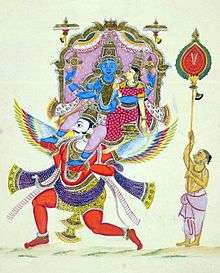
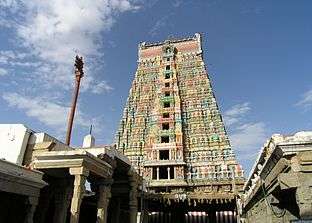
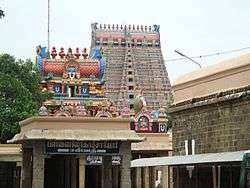

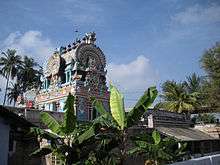


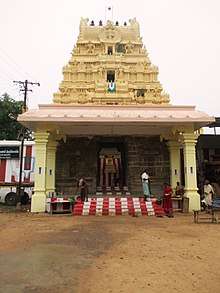

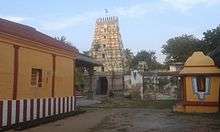
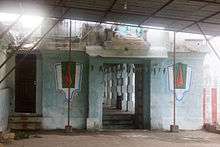
.jpg)
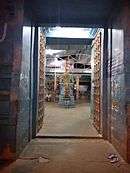
.jpg)
.jpg)
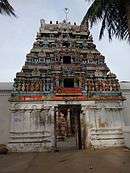
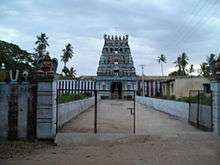
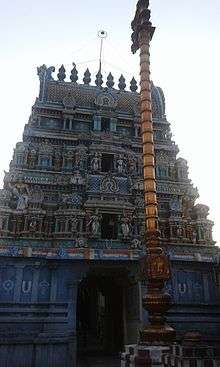
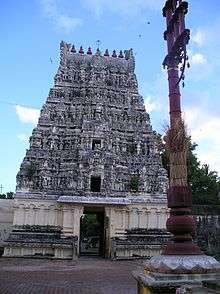
.jpg)
.jpg)
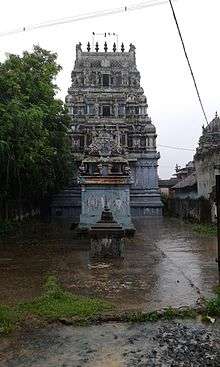
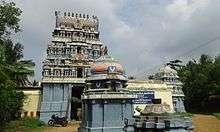
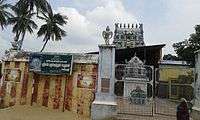
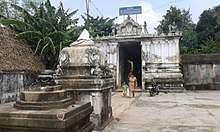
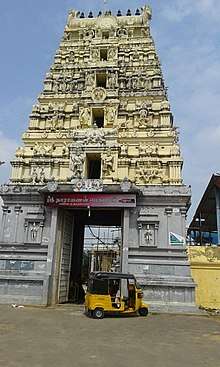
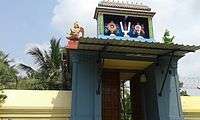



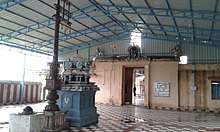
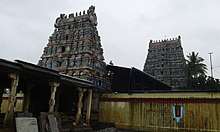
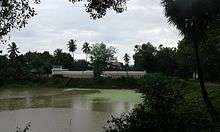
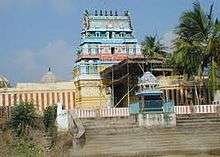
%2C_Nataraja_Temple_-_panoramio.jpg)
.jpg)
.jpg)
.jpg)

.jpg)

.jpg)
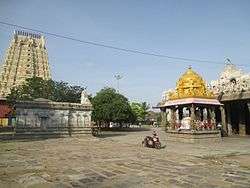
.jpg)
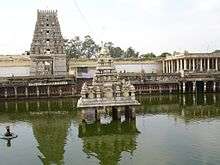
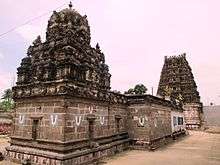
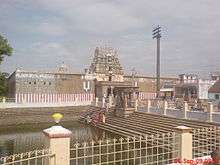

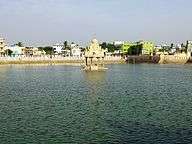
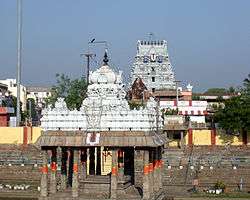
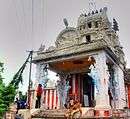
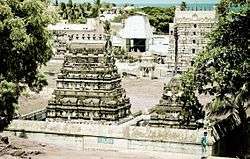
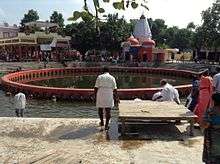
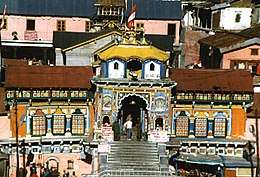


.jpg)

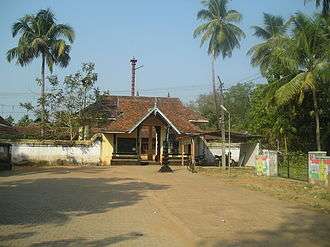


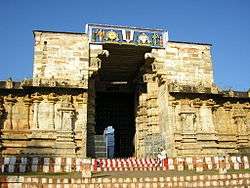
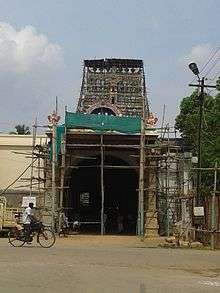
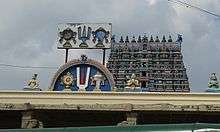


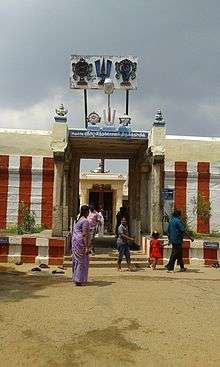
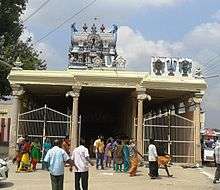

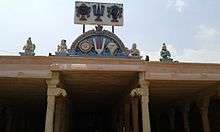

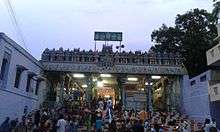
.jpg)
.jpg)

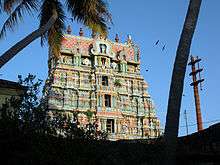

.jpg)